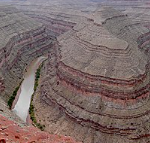Stonehenge rocks wales
Stonehenge is actually located in Wiltshire, England, not Wales. These rocks are associated with Wales because they are taken from Wales. It is a prehistoric monument consisting of a ring of standing stones, each around 13 feet high, seven feet wide, and weighing around 25 tons. The purpose and construction of Stonehenge have been subjects of much debate among scholars and archaeologists.
Stonhenge rocks wales

While Stonehenge itself is in England, Wales also has its share of ancient monuments and historic sites, including several stone circles and burial chambers. Notable Welsh sites include the Preseli Hills, from which some of the bluestones at Stonehenge are believed to have been quarried, as well as locations like Bryn Celli Ddu and Pentre Ifan.
During his research, Professor Mike Parker Pearson (UCL Institute of Archaeology) found a dismantled stone circle in west Wales which was moved to Salisbury Plain and rebuilt as Stonehenge.
According to Geoffrey of Monmouth, who described the origin of the Stonehenge rocks in his book “History of the Kings of Britain” in 1136. According to him the mysterious monoliths at Stonehenge were first spirited there by the wizard Merlin, whose army stole them from a mythical Irish stone circle called the Giants’ Dance. Centuries before the development of rudimentary geology, Geoffrey’s exotic theory – that the stones at Stonehenge were filched from a foreign field – has enveloped the 5,000 year-old site in yet another layer of mystical intrigue. Now, it appears the medieval chronicler might have been on to something.
Stonehenge consists of an outer ring of vertical sarsen standing stones, each around 13 feet (4.0 m) high, seven feet (2.1 m) wide, and weighing around 25 tons, topped by connecting horizontal lintel stones. Inside is a ring of smaller bluestones. Inside these are free-standing trilithons, two bulkier vertical sarsens joined by one lintel. The whole monument, now ruinous, is aligned towards the sunrise on the summer solstice and sunset on the winter solstice. The stones are set within earthworks in the middle of the densest complex of Neolithic and Bronze Age monuments in England, including several hundred tumuli (burial mounds).
Archaeologists believe that Stonehenge was constructed in several phases from around 3100 BC to 1600 BC, with the circle of large sarsen stones placed between 2600 BC and 2400 BC. The surrounding circular earth bank and ditch, which constitute the earliest phase of the monument, have been dated to about 3100 BC. Radiocarbon dating suggests that the bluestones were given their current positions between 2400 and 2200 BC, although they may have been at the site as early as 3000 BC.
One of the most famous landmarks in the United Kingdom, Stonehenge is regarded as a British cultural icon. It has been a legally protected scheduled monument since 1882, when legislation to protect historic monuments was first successfully introduced in Britain. The site and its surroundings were added to UNESCO’s list of World Heritage Sites in 1986. Stonehenge is owned by the Crown and managed by English Heritage; the surrounding land is owned by the National Trust.
Stonehenge could have been a burial ground from its earliest beginnings. Deposits containing human bone date from as early as 3000 BC, when the ditch and bank were first dug, and continued for at least another 500 years.
Why are the rocks called Stonehenge?
The name “Stonehenge” is believed to have originated from Old English. The word “stan” means “stone,” and “hencg” or “henge” likely refers to a circular or enclosed space. Therefore, Stonehenge roughly translates to “hanging stones” or “stone enclosure” in Old English.
The name reflects the nature of the monument, which consists of a circular arrangement of large standing stones enclosed within an earthen embankment. Stonehenge is one of the most famous prehistoric monuments in the world, and its unique design and mysterious purpose have captured the interest and imagination of people for centuries.
The Oxford English Dictionary cites Aelferic’s Glossary (tenth-century), in which henge-cliff is given the meaning ‘precipice‘, or stone; thus, the stanenges or Stanheng “not far from Salisbury” recorded by eleventh-century writers are “stones supported in the air”. In 1740, William Stukeley notes: “Pendulous rocks are now called henges in Yorkshire … I doubt not, Stonehenge in Saxon signifies the hanging stones.”[12] Christopher Chippindale’s Stonehenge Complete gives the derivation of the name Stonehenge as coming from the Old English words stān ‘stone‘, and either hencg ‘hinge‘ (because the stone lintels hinge on the upright stones) or hen(c)en ‘to hang‘ or ‘gallows‘ or ‘instrument of torture‘ (though elsewhere in his book, Chippindale cites the ‘suspended stones‘ etymology).
The “henge” portion has given its name to a class of monuments known as henges. Archaeologists define henges as earthworks consisting of a circular banked enclosure with an internal ditch.[14] As often happens in archaeological terminology, this is a holdover from antiquarian use.
Despite being contemporary with Neolithic true henges and stone circles, Stonehenge is in many ways atypical – for example, at more than 24 feet (7.3 m) tall, its extant trilithons’ lintels, held in place with mortise and tenon joints, make it unique.
Function and Construction of Stonehenge Rocks
The function and construction of Stonehenge have been topics of much scholarly debate and speculation over the years. While there is no definitive answer, several theories have been proposed based on archaeological evidence, historical context, and comparative studies with other ancient sites. Here are some key points about the function and construction of Stonehenge:
Function:
- Astronomical Observatory: One prominent theory is that Stonehenge was used as an astronomical observatory to track celestial events such as solstices, equinoxes, and lunar cycles. The alignment of certain stones with the movements of the sun and moon supports this theory.
- Religious or Ritual Site: Many researchers believe that Stonehenge held religious or ritual significance for the ancient people who built it. It may have been a site for ceremonies, rituals related to agriculture, fertility rites, ancestor worship, or other spiritual practices.
- Social and Cultural Center: Stonehenge could have served as a social and cultural center where people gathered for community events, trade, meetings, or communal activities. It may have played a role in unifying different groups or tribes.
- Symbol of Power or Authority: Some theories suggest that Stonehenge was a symbol of power, authority, or prestige for the individuals or groups who controlled or had access to it. It could have been a monument to showcase wealth, status, or achievements.
Construction:
- Transportation of Stones: The stones used in Stonehenge are believed to have been transported over long distances. The larger sarsen stones, weighing several tons each, likely came from the Marlborough Downs, about 20 miles north of Stonehenge. The smaller bluestones, which have been traced to the Preseli Hills in Wales, were transported over 150 miles to the site.
- Stone Arrangement: Stonehenge consists of several elements, including the outer circular bank and ditch, the inner horseshoe of large sarsen stones capped with lintels, the smaller bluestones within the inner circle, and the heel stone and slaughter stone outside the main circle. The precise arrangement and orientation of these elements have led to various interpretations regarding their purpose and symbolism.
- Construction Techniques: Archaeological studies suggest that Stonehenge was built in multiple phases over several centuries, starting around 3100 BCE. The construction techniques likely involved manual labor, wooden sledges, ropes, and possibly levers and pulleys to move and position the massive stones.
Overall, Stonehenge remains a fascinating and enigmatic monument, and ongoing research continues to shed light on its function, construction methods, and cultural significance in ancient times.
Stonehenge; a popular tourist destination
Stonehenge is indeed a popular tourist destination. It attracts visitors from all around the world who come to see this iconic prehistoric monument. Here are some key points about Stonehenge as a tourist attraction:
- Historical and Cultural Significance: Stonehenge is one of the most famous and mysterious ancient monuments globally, with a history dating back thousands of years. Its cultural and historical significance, coupled with the intrigue surrounding its purpose and construction, make it a compelling destination for tourists interested in archaeology, history, and ancient civilizations.
- Visitor Experience: Visitors to Stonehenge can explore the site through guided tours or self-guided walks, learning about its history, theories about its purpose, and the techniques used in its construction. The monument is located in a picturesque landscape, adding to the overall experience.
- Exhibition and Visitor Center: The Stonehenge Visitor Centre, located near the monument, offers interactive exhibits, displays, and educational resources that provide insights into the site’s significance and the people who built it. The center also includes a shop, café, and facilities for visitors.
- Access and Restrictions: While visitors can get relatively close to Stonehenge, there are barriers in place to protect the monument, and access inside the stone circle itself is restricted. Special arrangements, such as private access or sunrise/sunset tours, may be available for those seeking a more immersive experience.
- Tourism Impact: Stonehenge’s popularity as a tourist destination contributes to the local economy, supporting businesses such as hotels, restaurants, tour operators, and souvenir shops in the surrounding area. It also raises awareness about heritage preservation and the importance of safeguarding ancient sites.
Overall, Stonehenge’s combination of historical intrigue, cultural significance, and its status as a UNESCO World Heritage Site makes it a must-visit destination for many travelers interested in exploring ancient mysteries and iconic landmarks.
Sources/References:
- https://www.ucl.ac.uk/news/2021/feb/research-stonehenge-first-stood-wales
- https://en.wikipedia.org/wiki/Stonehenge
You may like:
- Depositional Landforms
- Features of Stream Erosion (water Erosion)
- Work of Streams | Erosion, Transportation, and Deposition
- Great Sand Dunes National Park
- Erosion Control Blanket


Leave a Reply